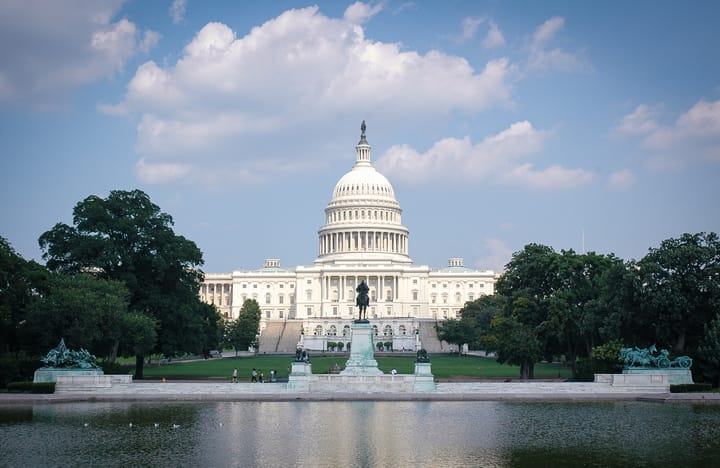Drivers want instant pay
Plus: Demand is up but drivers are fewer, new report says

A new survey of logistics professionals reveals what many in the industry already feel: demand is rising, but the driver pool isn’t. And while autonomous trucks get all the buzz, most fleet leaders still say they’d rather hire a human.
Meanwhile, the U.S. Department of Transportation announced a major policy shift, saying it would not support putting speed limiters on heavy-duty trucks. It also unveiled grant money for more truck parking spaces.
And check out the video of a semi-truck drag race.
Let's get rolling.

What a drag! Introducing a semi-truck drag race. There’s nothing like watching 3,000-horsepower trucks pulling 120,000-pound loads down a one-way drag strip. Caution: You might get hooked watching this one.
Train vs. truck accident averted. Fortunately for this truck driver, a bulldozer was at the ready at a train crossing when a lowboy trailer got stuck going across the tracks. Enjoy the camerawoman’s commentary when the truck gets pushed free in the nick of time.
Hold the diapers. When kids get behind the wheel and put a CB in their hands to be judge, jury and executioner, there’s no telling what justice looks like. Behold the Kangaroo Baby Court.
Raw horsepower. Who makes the most powerful semi? If you don’t know, the "TalkCDL Trucking Podcast" can help answer that question for you.

600
The number of “breakfast bundle” meals that employees of the Advantage Truck Group recently delivered to Families in Transition food pantry in Manchester, N.H. Source: The Trucker

Demand’s up, drivers are down
The year 2025 has turned into a confounding mix of trends for logistics businesses. Like many other trucking-related companies, logistics firms find themselves wrestling with a lower employee capacity while also dealing with increased demand for their services.
Some 63% of logistics companies report more demand from customers, according to a new survey from Tech.co. However, 85% of people who responded to the survey say they’re already near full capacity.
These numbers might seem like a win-win for the firms. After all, they’re busy and they have more clients waiting in the wings. But the high demand combined with fewer personnel can make for poor service, which can harm the business overall.
Tech.co received feedback from 521 logistics professionals about their industry and the direction it’s going. One key insight: 70% of respondents said, if given a choice between hiring a new driver or using a self-driving truck, they would choose the human driver.
Why this matters: Seventy-nine percent of logistics businesses say they have had to deal with a driver shortage, which has altered their freight movement strategies. In short, any lingering supply chain issues are just one hardship they’re dealing with. Read the Tech.co 2025 Logistics Report here.

Windmill alert: Drivers dodge large windmill blade
Lawsuit settled: Western Distribution forks over $919,000 in back pay
Getting heated: Expert warns drivers of potential uptick in road rage
Bucket bender: A semitruck clips a Louisiana signal worker

DOT moves to boost parking, cut red tape
The U.S. Department of Transportation announced a suite of policy changes aimed at easing pressure on truck drivers. The measures include $275 million in funding for truck parking, withdrawal of the proposed speed limiter rule and a move to eliminate 1,800 words of federal regulations. The FMCSA also plans to modernize its driver-facing platforms and crack down on double brokering.
Why this matters: Industry groups like OOIDA and ATA are backing the changes, saying they address longstanding concerns. If fully implemented, these updates could improve parking access, reduce paperwork and give drivers more control over their day-to-day work. (DC Velocity)
Is a driver shortage a myth?
One of the constants we’ve all heard about the industry for years is that there aren’t enough qualified drivers out there. Trucking companies can’t find them or can’t keep them. Either way, they need drivers—and have for years. But a recent study published by the Association for Supply Chain Management makes the case that carriers only need (and hire) drivers when their freight volume goes up, and they shorten the driver roster during times when demand falls.
Why this matters: “Policymakers should support freight-generating sectors—e-commerce, manufacturing, retail—over shortage-focused policies like younger driver programs,” the study posits. (FreightWaves)
Truckers want instant pay, but most don’t get it
A new report shows 93% of truck drivers prefer instant payouts, but fewer than half of logistics firms treat driver pay as time-sensitive. While most companies agree fuel providers must be paid quickly, only 44% say the same about drivers. That disconnect could hurt recruiting and retention in an already competitive market.
Why this matters: Instant pay isn’t just a perk anymore. It’s becoming a deciding factor for drivers choosing where to work, and a missed opportunity for fleets that haven’t modernized their payment systems. (PYMNTS)

Cheaper gas but tighter financial margins
Despite slightly lower fuel costs year over year, carriers found operating margins were tighter across the board, according to the American Transportation Research Institute’s 2025 costs and performance benchmarking report, "An Analysis of the Operational Costs of Trucking." Every trucking sector except LTL experienced operating margins below 2 percent from 2023 to 2024.
Why this matters: This is yet another data point for a financially insecure industry. “Carrier profitability suffered across all industry sectors under these pressures, as the findings show in stark detail,” the ATRI says in the report. (ATRI)

Thanks for reading today's edition! You can reach the newsletter team at editor@theinsidelane.co. We enjoy hearing from you.
Interested in advertising? Email us at newslettersales@mvfglobal.com
The Inside Lane is curated and written by Alan Schmadtke and edited by Bianca Prieto.





Comments ()